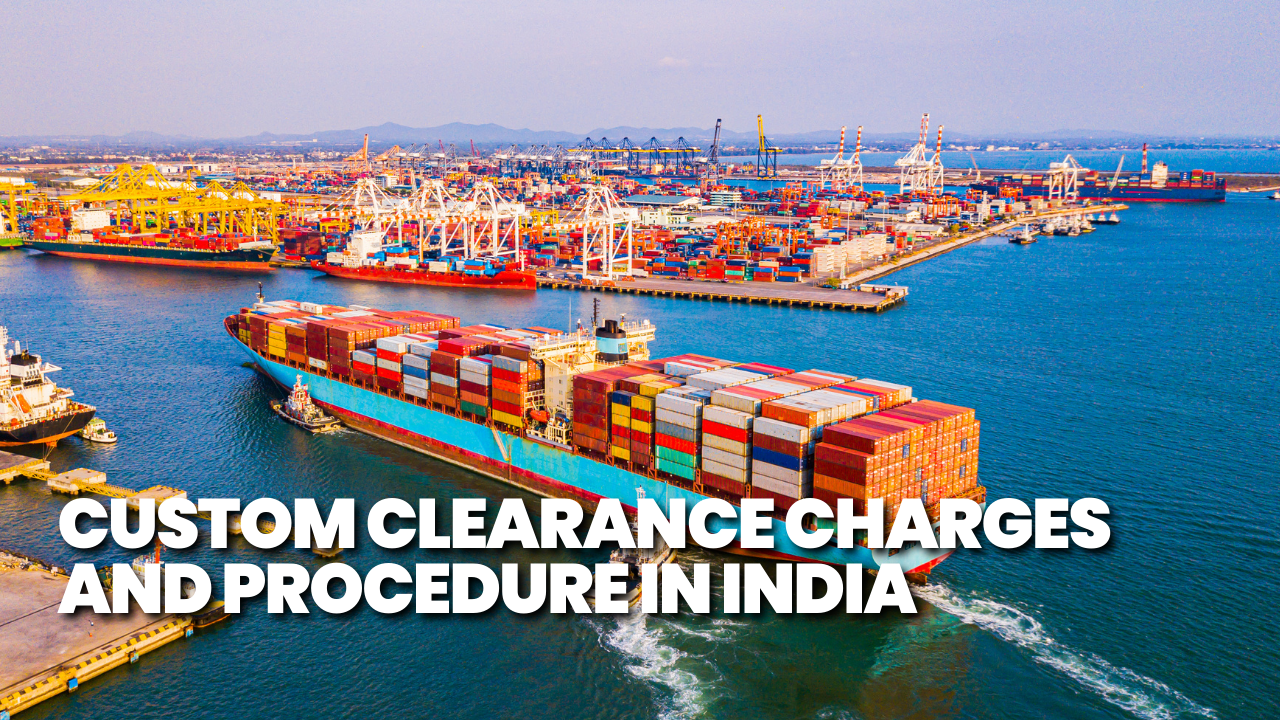
Have you ever thought about why it costs so much more than just the price of the things and the shipping? Often, it’s because buyers ignore the custom clearance charges until they get the bill.
India’s CBIC released the National Time Release Study, which shows that between 2023 and 2025, the average release time at major seaports fell by about 6 hours. That’s progress, but even though clearance has become faster, these delays and the fees that come with them still cost importers more than they thought they would. Knowing how the custom clearance procedure works and how much it costs is important, so you don’t get surprised.
What Are Custom Clearance Charges?
Importers pay fees and taxes called “custom clearance charges” to get their goods out of customs. These fees are on top of the freight and insurance costs. Usually, they have-
- Basic Customs Duty (BCD) is an import tax based on the HS code and the amount of the goods being brought in.
- A tax on foreign goods that is similar to the GST tax on goods made in India is called Integrated GST (IGST).
- The social welfare surcharge (SWS) is a small amount added to the customs tax.
The handling charge for customs processing is around one percent of the value of the shipment. - An inspection fee will be applied if customs officials need to physically inspect the items.
- There are fees to pay if things are held at the port or warehouse because of delays.
- If you hire a Customs House Agent (CHA) to help you with the process, you must pay them fees.
The landing cost of your goods is made up of these fees.
How Do Clearance Charges Change?
Documents must be correct; mistakes in bills, HS codes, or IEC lead to delays and extra costs. Several factors determine the overall charges:
- Value of goods: More valuable things have higher duties.
- HS Code: The tax rates on different goods are different.
- Country of origin: Some countries may pay less taxes because of trade deals.
- Transport method: Freight sent by air usually costs more than freight sent by sea.
- Port and delays: Delays in clearance make holding and demurrage more expensive.
Also Read This: BRC in Export: A Guide Every Indian Exporter Must Know
Custom Clearance Procedure in India
This is how the process works step by step.
Organize documents
A certificate of origin, insurance, packing list, bill of lading or airway bill, invoice, and importer exporter code (IEC) are all necessary documentation for importers.
The arrival of goods
When the products arrive in India, the shipping line or airline submits an Import General Manifest (IGM) to customs.
Bill of Entry Submission
On the ICEGATE system, the buyer (or CHA) files a Bill of Entry. This shows information about the package, like what the product is, how much it costs, and its HS code.
Duty Assessment: Customs figures out the duties and taxes that need to be paid based on the value and description of the goods.
Inspection
Some packages can be cleared with just the documentation available. Customs officials may check others in person.
Duty Payment
The importer pays customs tax, IGST, and other charges.
Release of Goods
Customs sends an “Out of Charge” order after payment, so the buyer can take delivery of the goods.
How to Avoid Delays & Extra Costs
Importers and exporters must be careful and plan before avoiding delays and extra costs during the customs clearance process. It is easier to process your order quickly and less likely to be rejected if you include the proper documents, such as the invoice, packing list, Importer Exporter Code (IEC), and HS code. Working with a reputable customs broker can make things easier and reduce mistakes.
To avoid penalties, it’s also important to keep an eye on shipments and pay duties on time. Making changes at the last minute may lead to a lot of storage or demurrage charges, so it’s important to check everything carefully beforehand. Businesses can save a ton of money on customs fees by researching the limitations offered by different trade agreements.
Wrapping It Up
For importers in India, it is important to know the custom clearance charges and the custom clearance procedure. The charges have a direct effect on the end price of the goods, and the process makes sure that the rules are followed. Importers may simplify the process and save money by having the proper documentation, planning ahead, and getting help from a reliable customs agent.
FAQs
They include all the duties, taxes, and fees that need to be paid in order to get imported goods through customs. These consist of handling, inspection, agency, BCD, IGST, and SWS fees.
Clearance may require 2–3 days, depending on the accuracy of the documents. It can take a week or more if there are delays with paperwork or checks.
Yes, by classifying things with the correct HS code, taking advantage of trade agreement benefits, and avoiding delays leading to funds for storage fees.
Also Checkout Our YouTube Channel: @limeinstituteofexportimport






